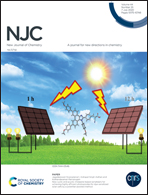A novel column fabrication approach for capillary gas chromatography via a cross-linked organogel network with high stability and inertness
Abstract
This work presents a novel column fabrication approach for capillary gas chromatography (CGC) through the condensation reaction of a hydroxyl-terminated polymer with a cross-linker inside a capillary column. In this work, polypropylene glycol (PPG 4000) and tris[3-(trimethoxysilyl)propyl]isocyanurate (ICS) were employed to fabricate the PPG-gel capillary column for GC analyses. Inside the column, a 3D cross-linked organogel network forms on the capillary inner surface by condensation of PPG 4000 with ICS under the given mild conditions. As a result, the PPG-gel column exhibited moderate polarity and showed distinctly advantageous resolving performance and inertness for carboxylic acids over the PPG column by the conventional static coating method. Also, it achieved high-resolution separations of the isomer mixtures of alkanes, alkylbenzenes and halobenzenes. Moreover, the PPG-gel column exhibited dramatically improved solvent stability because of its cross-linked organogel network. The organogel column displayed excellent column repeatability and reproducibility with the RSD% values in the range of 0.01–0.04% for run-to-run, 0.71–0.84% for day-to-day and 2.4–3.1% for column-to-column. The proposed organogel approach is facile and applicable to other analogous materials and has a promising future for wide applications.



 Please wait while we load your content...
Please wait while we load your content...